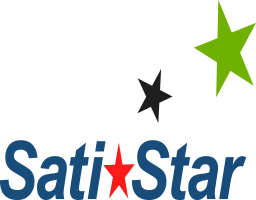Total Cost of Ownership (TCO)
Overview
Information Technology hardware and software entail costs beyond those that are directly attributable to their acquisition. The Total Cost of Ownership of IT solutions over their entire lifespan is often several times the initial cost of acquisition. In order to make valid business decisions it is important to fully account for all of these costs.
We’ll help you to understand the total cost of these resources over their entire life cycle.
Scope And Deliverables
Total cost of ownership (TCO) is a financial estimate designed to help consumers and enterprise managers assess direct and indirect costs related to the purchase of any capital investment, such as (but not limited to) computer software or hardware.
A TCO assessment ideally offers a final statement reflecting not only the cost of purchase but all aspects in the further use and maintenance of the equipment, device, or system under consideration. This includes the costs of:
- Training support personnel and the users of the system
- Costs associated with failure or outage (planned and unplanned)
- Diminished performance incidents (i.e. if users are kept waiting)
- Costs of security breaches (in loss of reputation and recovery costs)
- Costs of disaster preparedness and recovery
- Floor space
- Electricity
- Development expenses
- Testing infrastructure and expenses
- Quality assurance
- Incremental growth
- Decommissioning
- etc.
Therefore, TCO is sometimes referred to as total cost of operation. When incorporated in any financial benefit analysis (e.g., ROI, IRR, EVA, ROIT, RJE) TCO provides a cost basis for determining the economic value of the IT investment.
Many consumers, businesses, and governments fail to understand and calculate TCO and instead rely on TCA (Total Cost of Acquisition) to make buying decisions.
TCO can and often does vary dramatically against TCA, although TCO is far more relevant in determining the viability of any capital investment, especially with modern credit markets and financing. TCO also directly relates to an organization’s total costs across all projects and processes and thus, its profitability.
Cost of ownership analysis (or TCO), is a business case designed especially to find the lifetime costs of acquiring, operating, and changing something.
Those who purchase or manage computing systems have had a high interest in cost of ownership since the 1980s, when the large difference between IT cost and IT purchase price became known. The five year cost of ownership for major computing systems can be five to eight times the hardware and software acquisition costs.
Today, however, TCO analysis is used to support acquisition and planning decisions for a wide range of assets that bring significant maintenance or operating costs across a usable life of several years or more. Total cost of ownership is used to support decisions involving computing systems, vehicles, laboratory and test equipment, medical equipment, manufacturing equipment, and private aircraft, for instance.
Good TCO analysis brings out the “hidden” or non-obvious ownership costs that might otherwise be overlooked in making purchase decisions or planning budgets.
The analysis begins with the design of a comprehensive cost model that completely covers the subject of the case, and which supports the purpose and needs of decision makers. SatiStar’s consultants can provide you with a structured approach to an IT acquisition cost model that works well for many situations. We’ll help identify cost items that are planned and managed together (have common cost drivers), including major resource categories throughout the IT system lifecycle stages.
Our model provides an effective tool for assuring business case builders and case recipients that every important cost item is included and that everything irrelevant is excluded.
TCO analysis is not a complete cost benefit analysis, however. Strictly speaking, TCO pays no attention to business benefits other than cost savings (and these show up in TCO analysis only when different TCO scenarios are compared). When this approach is used in decision support, it is usually assumed that the benefits from all alternatives are more or less equal, and that choices differ only on the cost side.
What We Will Do
- Provide a structured approach to analyzing your total costs of ownership of your investment.
- Collect and analyze relevant TCO data.
- Provide relevant TCO feedback to your leadership team.
- Enable you to make clear and informed IT investment decisions.
- Set up a structure to periodically re-evaluate TCO.
- Ensure that relevant internal personnel become familiar with the approach.
What We Need You To Do
- Provide us with access to key relevant employees and managers.
- Authorize these resources to provide us with the required information.
- Provide us with required access to your IT systems.
- If desired, assign an internal TCO team to the project.
- Ensure availability of the team for working on the project in a timely manner.
- Ensure management availability to review and approve the analysis in a timely manner.
- Provide appropriate working space for the team’s activities.
- Setup periodic re-evaluation of TCO.
WHAT PEOPLE ARE SAYING
SatiStar's Experience Makes The Difference!
